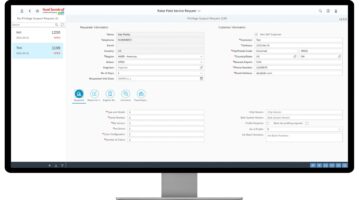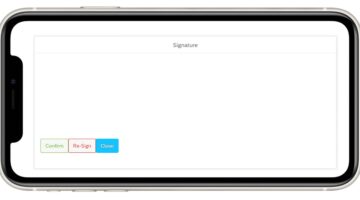In 2016, the IT team behind Sun Chemical embarked on a journey to learn more about design thinking via a free openSAP course. Since then, the team has been systematically improving the operational effectiveness and efficiency of business processes through design-led workshops, bringing over 200 SAP Fiori apps to life to support their daily work.
Sasi Reddy, senior SAP solution architect at Sun Chemical, shares the team’s user experience (UX) transformation journey, the biggest takeaways, and what it takes to be a UX champion.
From Theory to Action with an openSAP Course on Design Thinking
Sun Chemical is a recognized leader in printing inks, coatings, pigments, and supplies for the packaging, publication, commercial, industrial, and digital markets. With over 20,000 employees spread across 63 locations around the world, Sun Chemical relies on lean business processes to ensure its field service workers and customers can quickly and easily maintain field data and enter new requests on the go, both on- and offline.
To further enhance their knowledge of design thinking and to learn how this methodology could be applied to both process improvements and application development, Reddy and his team took part in the openSAP course Developing Software Using Design Thinking in 2017. The core of the methodology is developing empathy for users by putting oneself in their shoes. Design thinking also relies on prototyping and a strong iterative process rather than on intuition, something which Sun Chemical has embraced fully. Since completing the course, the team has worked with a few SAP partners, and later independently, to offer design thinking services to the entire company, with 15 major design-led projects to date.
SAP Fiori Apps Support Lean Business Processes
Over the past five years, Sun Chemical has groomed an elite team of UX champions that leverage design thinking to accelerate and digitize its processes. A key factor in the team’s success has been to build tailored SAP Fiori apps that support an agile development approach. This method scales and requires a minimal investment. It allows the team to build apps for a system that runs on SAP ERP, which plans to migrate to SAP S/4HANA later.
If you ask Reddy which of the more than 200 existing apps he’s most proud of, there are many that come to mind, such as the Regulatory Inquiry App and the Raw Material Request App, both of which emerged from a prototype developed during the 2016 openSAP course and have since been rolled out globally.
One example that captures the business impact of the UX transformation is the Field Service App.
From Workshop to Real Life: The Field Service App
A remote design thinking workshop was kicked off in 2018 to determine how to better manage the day-to-day activities for European field service engineers who relied on using a mix of e-mails and spreadsheets to maintain their work order history and incoming requests. The workshop included the field engineers, their supervisors, the administrator who orchestrated the work orders, and developers from India. From the workshop emerged the idea to develop an application that contains all the information in one place.
The app, which was developed in a few short weeks, makes it easy to track what service has previously been done for a specific customer and supports detailed reports on previous work orders. Naturally, it allows field service workers to easily enter new orders and incorporates a digital signature on native iOS mobile devices, something which the workshop participants were “really surprised that we could deliver on so quickly,” says Reddy. Since the rollout in Europe, the app has been immediately accepted by its users and has made its way to North and South American field service workers as well.
It’s About the Mindset, Not Just the Apps
There is no doubt that the design thinking method requires a significant time investment from those involved. From the initial workshop, where research, user empathy, and ideation take place, to the design process that relies on numerous iteration cycles with end users, you have to put in the work to ensure the end result solves the problem at hand and meets users’ expectations.
Reddy agrees that the effort is time consuming. He and his UX champion colleagues spend a lot of time taking part in collaboration calls with teams who are currently switching from SAP GUI to SAP Fiori. They receive feedback on the applications on a daily basis to ensure the transition to the new user experience goes smoothly.
But Reddy has also seen the fruits of his team’s labor: “People are seeing the value of it. Our departments have seen our work. It’s been almost four years. Previously, we drove design thinking; now people request it from us. And not necessarily to build apps, though everyone’s now on board with SAP Fiori, but to improve processes in general. The mindset has really changed in our company.”
To learn more about the SAP Fiori user experience, visit the SAP Fiori topic page on the SAP Community.
Andrea Waisgluss is a content strategist for SAP Design.
This article originally appeared in the SAP Community.





